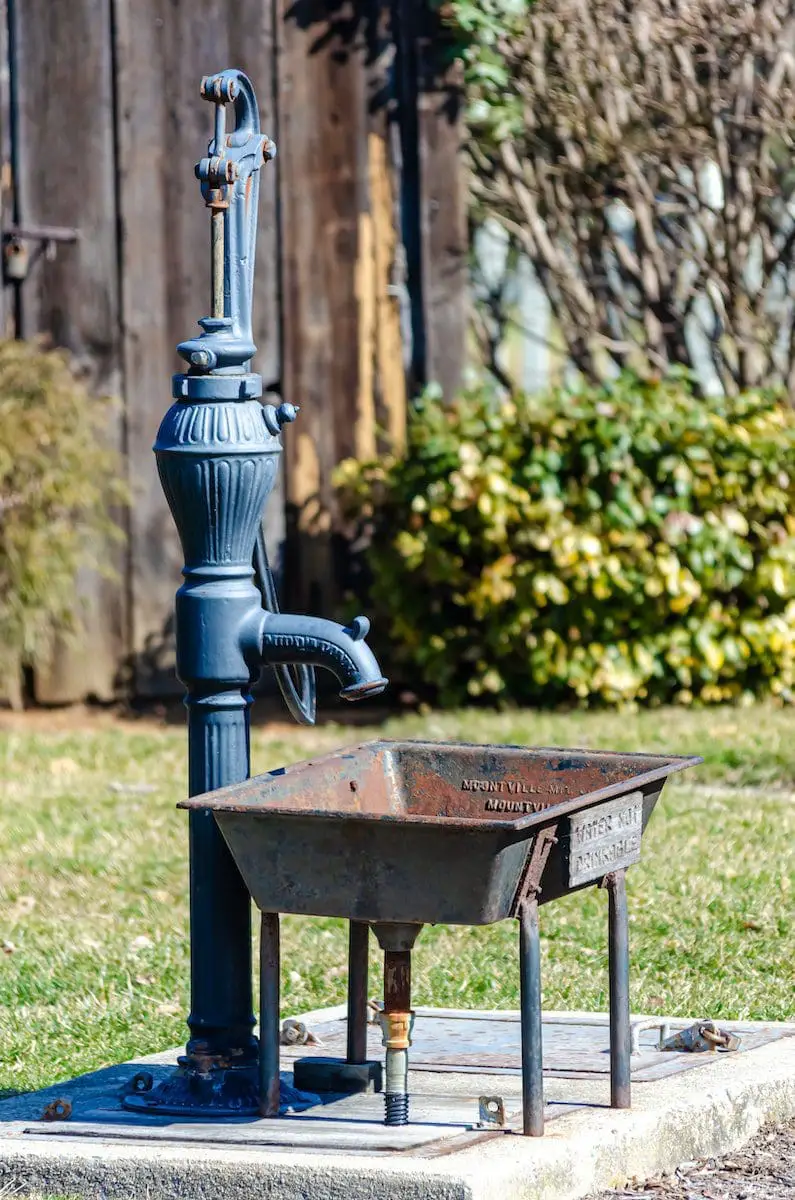Wells can extract water from the ground by digging or drilling. Water is brought to ground level by pumps or by drawing it out from the well through buckets or large utensils.
Key Takeaways
- Dug wells have shallower depths and larger diameters, while drilled wells reach greater depths with smaller diameters.
- Dug wells face higher contamination risks from surface water than drilled wells, which are less susceptible due to their depth.
- Drilled wells utilize modern drilling equipment, whereas dug wells rely on traditional excavation methods.
Dug Well vs Drilled Well
A dug well is a shallow well that is manually dug into the ground, it relies on the natural recharge of groundwater from the surrounding area and is found in rural areas. Drilled wells are deeper and more complex than dug wells, sealed with a casing to prevent contamination.

A dug well is hand-dug in rural areas, or a shovel is used; hence it is shallow. It obtains water from less permeable and top layers of soil like sand, silt, and clay.
A drilled well is drilled deep into the ground by a rotatory drilling machine. The drilling machine is cased within a protective covering to prevent the collapse of the driller when it strikes hard rocks.
Comparison Table
| Parameters of Comparison | Dug Well | Drilled Well |
|---|---|---|
| Construction | It is either hand-dug or dug by shovel. | It is drilled using a rotary drilling machine. |
| Depth | It has a shallow hole and extracts water from the topmost layers. | It can go up to 300-400 meters or 1000 feet deep into the ground. |
| Water quality | The water extracted is high in minerals and hence needs to be treated well. | The water extracted is muddy until it passes through a semipermeable membrane that filters out the impurities. |
| Water extraction | It can be drawn out using handpumps, electric pumps or can be hand-drawn. | Water is pulled out using suction or electric pumps. |
| Used for | It is used in rural areas for everyday use at homes. | It is used in urban areas at home or in factories as groundwater level is low in cities. |
What is Dug Well?
A dug well is seen in rural areas or in some localities of urban areas that have been built years ago. A dug well is shallow, and the water that is retained is highly contaminated by either pollutants or minerals.
There are high chances of water getting exhausted during the dry season as dug wells draw water from the topmost layers of groundwater table like sand, silt, and clay.
After digging the well, it is protected by building bricks or concrete materials so that it does not collapse due to seepage of water.
The dug wells need low technology means and are inexpensive. It needs manual labour to access groundwater. The lifespan of dug wells depends upon the climate and nature of the rains, as they are responsible for filling up the groundwater table.

What is Drilled Well?
A drilled well is drilled by table rotary or cable tool drilling machines which creates a cutting action in-ground or on hard rocks. The depth of these wells might range from 300 to 900 meters.
The drilled wells use PVC or metal pipes that pull out water from the bore, but water can be muddy since it is extracted from deep strata of ground, so a semipermeable screen or casing is used to protect and filter the water.
To avoid contamination through pathogens, the surface seal is used, which provides an impermeable barrier between the outside environment and the well.
The water is pulled out from the ground using electric pumps as much energy is needed to pull out water from such a depth. Most drilled wells last up to 30-50 years.

Main Differences Between Dug Well and Drilled Well
- Water from dug wells can be drawn out using handpumps, electric pumps or can be hand-drawn. Water from drilled wells is pulled out using suction or electric pumps.
- Dug wells are used in rural areas for everyday use at homes. Drilled wells are used in urban areas at home or in factories as the groundwater level is low in cities.


The main differences between dug well and drilled well are clearly laid out. This is a comprehensive and informative comparison.
The comparison table provided is extremely valuable in understanding the construction, depth, and water quality aspects of these two types of wells.
I couldn’t agree more. Those specific parameters help in making an informed decision while choosing the type of well.
Indeed, the table adds clarity to the comparison and enables a well-rounded understanding.
This is an excellent piece, offering a plethora of valuable information about the dug well and drilled well. Very well-constructed comparison!
The information about the differences in construction and the usage of dug wells and drilled wells is very well outlined.
Absolutely, the article gives a clear insight on the distinctions between the two types of wells.
I found the technical details provided quite enlightening. It’s great to learn more about these differences.
A thoughtful analysis of the depth and water quality differences between dug wells and drilled wells. Very well presented.
Absolutely, the clarity in the construction and water extraction methods of both types of wells is commendable.
The water extraction from dug well and drilled well is well explained. This will be useful for people to understand the difference.
I agree, this comparison answers most questions people may have about these two types of wells.
The description of dug well and drilled well is quite detailed, making the comparison much easier to comprehend.
Agreed, the detailed explanation certainly makes it easier to grasp the differences between the two.
This article provides an insightful overview, detailing the usage and lifespan aspects of dug wells and drilled wells.